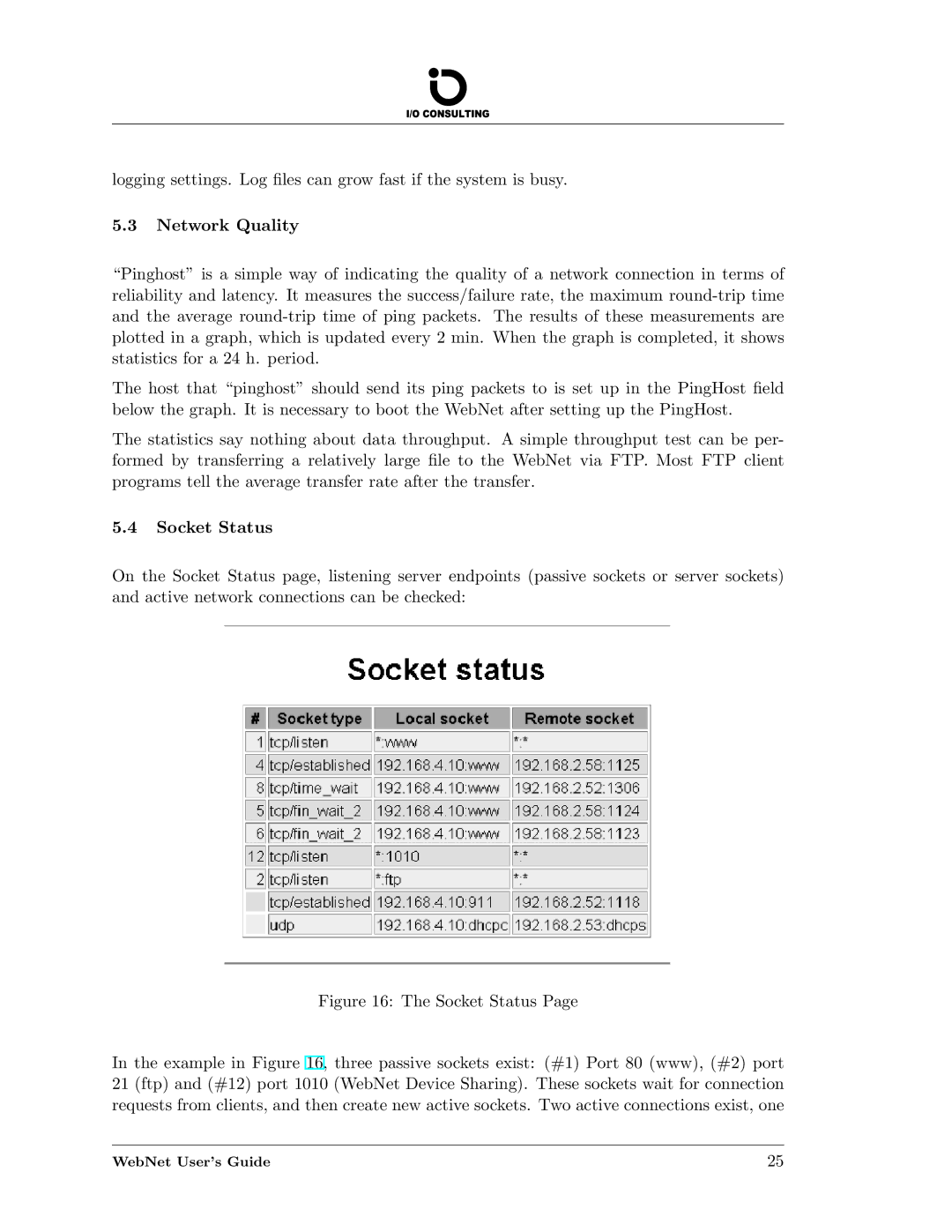
logging settings. Log files can grow fast if the system is busy.
5.3Network Quality
“Pinghost” is a simple way of indicating the quality of a network connection in terms of reliability and latency. It measures the success/failure rate, the maximum
The host that “pinghost” should send its ping packets to is set up in the PingHost field below the graph. It is necessary to boot the WebNet after setting up the PingHost.
The statistics say nothing about data throughput. A simple throughput test can be per- formed by transferring a relatively large file to the WebNet via FTP. Most FTP client programs tell the average transfer rate after the transfer.
5.4Socket Status
On the Socket Status page, listening server endpoints (passive sockets or server sockets) and active network connections can be checked:
Figure 16: The Socket Status Page
In the example in Figure 16, three passive sockets exist: (#1) Port 80 (www), (#2) port 21 (ftp) and (#12) port 1010 (WebNet Device Sharing). These sockets wait for connection requests from clients, and then create new active sockets. Two active connections exist, one
WebNet User’s Guide | 25 |
